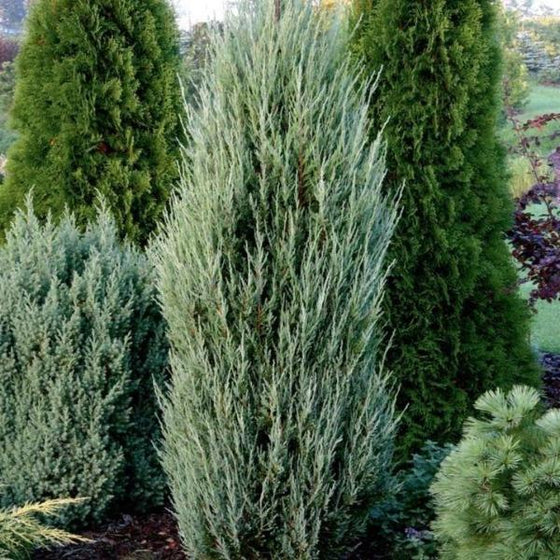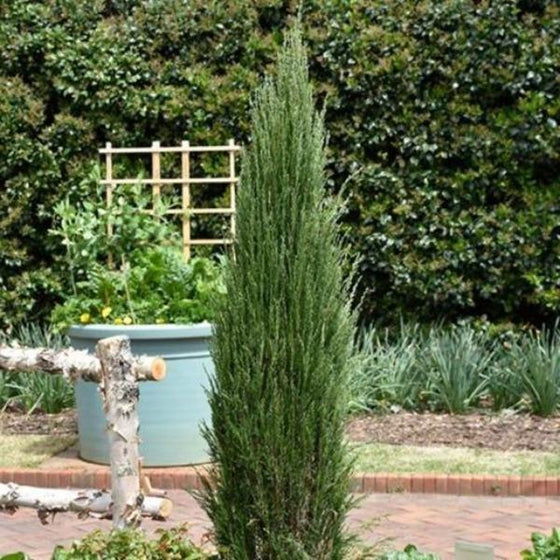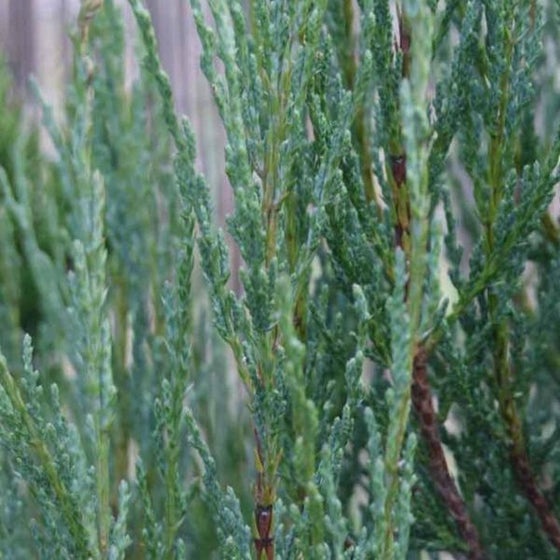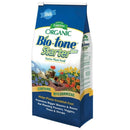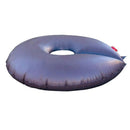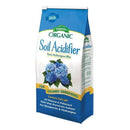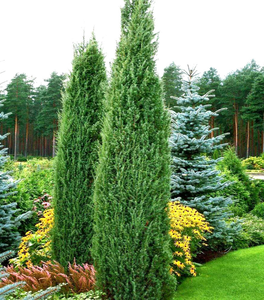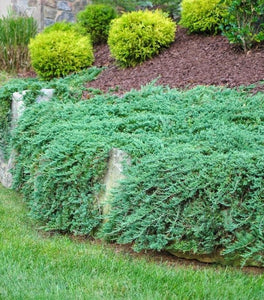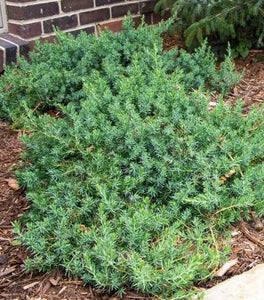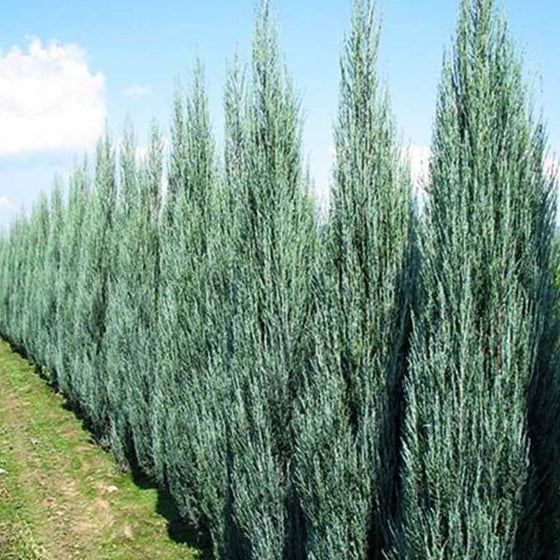
Images Depict Mature Plants
Blue Arrow Juniper Trees for Sale Online
Blue Arrow Juniper Trees (Juniperus scopulorum) is the perfect tree for smaller spaces, whether you are looking for a privacy wall or focal point specimen trees. The silvery-blue color shines in full sun gardens. Deer will typically leave these trees alone, but birds flock to Blue Arrow Junipers, nesting in their branches and enjoying the berries.
Juniper Blue Arrow grows quickly to about 15 feet high but only 2 to 3 feet wide, growing in a handsome narrow columnar habit. Even with limited space, you can create a privacy screen with a narrow Juniperus Blue Arrow. These are an excellent alternative to Italian Cypress trees since they are cold, hardy, drought-tolerant, and easy to care for.
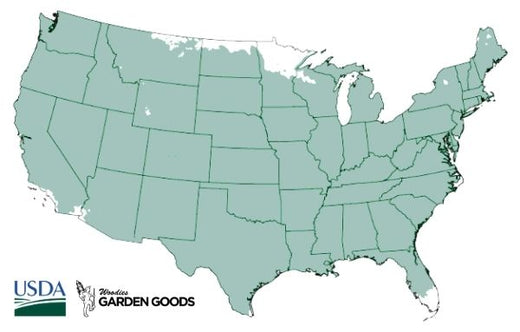
| Hardiness Zone: | 4-9 |
|---|---|
| Mature Height: | 15 to 20 Feet |
| Mature width: | 2 to 3 Feet |
| Classification: | Evergreen tree |
| Sunlight: | Full sun |
| Habit: | Upright, columnar |
| Foliage: | Powdery blue green |
| Flower Color: | Inconspicuous |
| Pruning Season: | Prune in late winter before new growth or after new growth hardens off in summer |
| Soil Condition: | Any well drained soil |
| Water Requirement: | Water well until established, then drought tolerant |
| Uses: | Tolerates heat and drought. Full sun brings out the best fall color. Will adapt to slightly moist sites |
How to Care for Blue Arrow Juniper
Before you buy a Blue Arrow Juniper Tree, make sure to read about the recommended care instructions to keep this plant healthy and flourishing.
How do I plant my Blue Arrow Juniper Tree?
To plant your Blue Arrow Juniper trees, dig a hole twice as wide as the root system but not deeper. Depending on the quality of your existing soil you may need to mix in a locally sourced compost or organic topsoil. We do not recommend using straight topsoil or compost as a back-fill soil because more times than not these products will retain entirely to much moisture and will cause the root system to rot. Adding compost or peat moss will help the young feeder roots of Blue Arrow Juniper to spread through the loose, nutrient rich soil, much easier than if you used solely the existing soil. The most common cause of plant death after transplanting is planting the new plant too deeply. That is why we do not recommend planting in a hole any deeper than the soil line of the plant in the pot. A good rule is that you should still be able to see the soil the plant was grown in after back-filling the hole. Once the hole is fully filled with your soil mixture, pat gently, cover the area with 2 to 3 inches of organic hardwood mulch, and water deeply.
How often do I water my Juniper Tree?
After back filling and lightly compacting the 50/50 mix of existing soil and compost give the Blue Arrow Juniper a slow and deep watering. Most of the water you put on the plant at first will run away from the plant until the soil is soaked. A general rule of thumb is to count to 5 for every one gallon of pot size. For example a one gallon pot would be watered until you count to 5 a three gallon pot would be 15 and so on. Check the plant daily for the first week or so and then every other day there after - if the top three inches of soil are dry then it is time to water again, and when in doubt it is OK to wait an extra day or two. Water using the counting method for the first few weeks, until the tree is established, then you should only need to water them in particularly hot or dry seasons.
What type of mulch should I use for my Juniper Tree?
We highly recommend that you mulch your Blue Arrow Juniper with either a ground hardwood mulch or a ground cypress mulch. Any type of mulch will do but cypress or hardwood mulch will be of a higher quality and provide better nutrition overall as they breakdown. Mulching helps to keep weeds away which will compete with your new investment for water and nutrients, as well as regulating the temperature in the soil. A 2 to 3 inch layer of mulch is sufficient but remember to take care not to cover any part of the young trunk of the tree with mulch. Its better to leave at least a one inch gap of space between the mulch and the stem or trunk of the plant.
What type of fertilizer should I use with my Blue Arrow Juniper?
Upright junipers such as Blue Arrow Juniper grow best if they are fertilized lightly in the spring once frost has passed with a well-balanced, extended-release, fertilizer such as Espoma Tree-tone or Holly tone. These particular mixtures will help add the slight level of acidity to your soil, which is ideal for junipers. You many fertilize Blue Arrow Junipers again in late summer to mid-fall, but no later.

